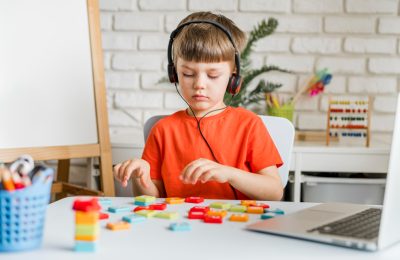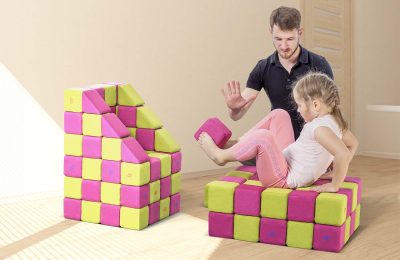Play therapy – How Daily Play Can Become an Effective Therapeutic Tool?
Introduction
JollyHeap block therapy is based on the principles of play therapy – one of the most natural and effective methods of supporting children’s development. Through free play, children learn to regulate emotions, develop social, motor, and cognitive skills.
For therapists, educators, and caregivers, it’s essential to choose tools that not only engage children but also support their development on multiple levels. JollyHeap blocks are a solution that can be successfully used in both individual and group therapy. Their magnetic properties, soft texture, and flexible construction options make them suitable for working with children who have sensory, motor, emotional, and social difficulties.
Play Therapy as a Method of Supporting Child Development
JollyHeap block therapy is used in work with children:
• with sensory integration disorders,
• with delays in motor development,
• with emotional and social difficulties,
• with emotional and social difficulties,
• with intellectual disabilities,
• with autism spectrum disorders (ASD),
• with attention deficit hyperactivity disorder (ADHD).
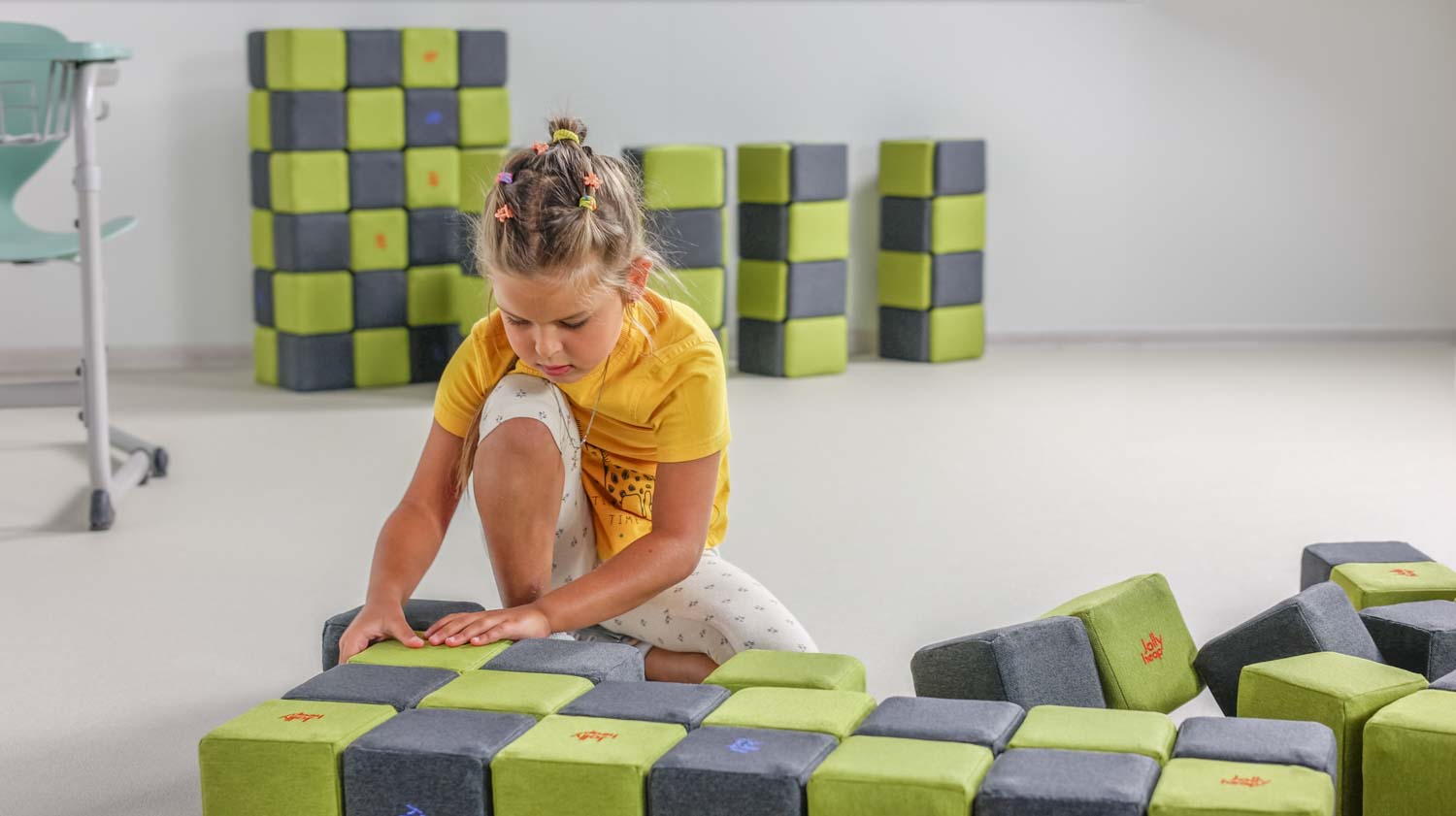
Play allows children to explore their environment spontaneously, develop creativity, and strengthen their sense of agency. Various materials are used in therapy to stimulate development, and JollyHeap blocks stand out with their wide range of possible applications.
As Paweł Zawitkowski, NDT-Bobath physiotherapist, emphasizes:
“JollyHeap blocks offer the possibility of unlimited time and space modification of the child’s environment – a space for work, therapy, rest, and play. Thanks to the ability to shape surfaces, dimensions, and forms, we can adapt them to the individual limitations and dysfunctions of the child.”
Cognitive Development
In the early years, cognitive development is akin to planting seeds in a garden; the right conditions and nutrients help those seeds grow into healthy plants. Similarly, providing children with a stimulating environment full of diverse learning experiences enables them to develop the cognitive skills essential for processing information and understanding the world. Skills like memory, attention, and the ability to make connections between ideas are honed during this period. Interactive activities, including puzzles, building blocks, and learning games, stimulate brain development and encourage children to think critically.
1. Stimulating Sensory Integration with JollyHeap Blocks
How do JollyHeap blocks support sensory integration?
Children with sensory integration disorders often struggle with processing tactile, proprioceptive, and vestibular input. JollyHeap blocks help regulate these inputs through various activities:
Tactile stimulation
JollyHeap blocks provide a variety of sensory experiences thanks to their unique structure and materials. The fabric covering them has a soft, pleasant texture that ensures a secure grip. Combined with elastic foam, it allows for manipulation as well as movement-based play – children can walk on them, sit, lie, or even slide.
Children with tactile hypersensitivity can gradually become accustomed to new sensations, adjusting the intensity of contact – from light touch to firm pressure. The soft structure of the blocks also increases the sense of safety, eliminating fear of falling or collapsing constructions.
An additional sensory element is the built-in magnets. The process of connecting and disconnecting the blocks delivers satisfying kinesthetic input, improves concentration, and has a calming effect. The characteristic “click” sound and gentle resistance during disconnection help children focus, supporting sensory therapy and mindfulness.
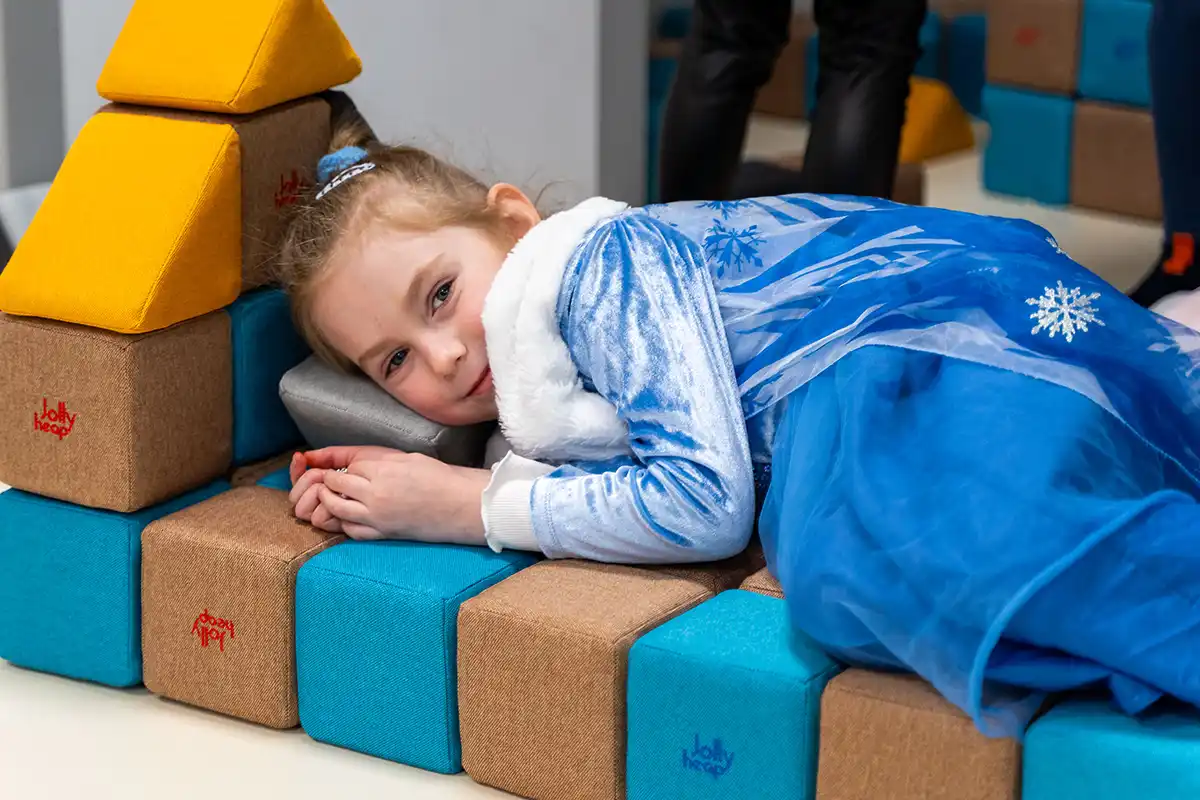
Development of proprioception
Proprioception, or deep body awareness, helps children orient themselves in space and control their movements. JollyHeap blocks support this through play therapy by encouraging activities like lifting, carrying, building, and knocking down structures. These actions engage various muscle groups and teach children how to regulate force and precision.
Large, lightweight yet stable blocks promote motor coordination. Moving large structures or manipulating individual elements helps children control muscle tension, which is especially beneficial for children with hypotonia or motor planning difficulties.
The blocks can also serve as added weight in strength exercises – children can lift, push, or stabilize larger constructions, improving motor control and strengthening postural muscles.
Vestibular exercises
The vestibular system is responsible for balance and spatial orientation, and its proper function is crucial for motor development. JollyHeap blocks allow children to engage in activities that support this area, such as climbing structures, balancing on steps, or jumping from different heights.
Dynamic play like building unstable surfaces, toppling towers, or crawling through tunnels stimulates balance responses and helps children adapt to a changing environment. The blocks’ soft texture lets children explore movement without fear of injury, boosting their confidence and willingness to take on new challenges.
In vestibular therapy, the blocks can be used to build obstacle courses, sensory paths, or structures requiring climbing and balancing. These exercises develop coordination, strength, and postural stability while introducing fun and creativity into therapy.
When planning the setup of a sensory integration (SI) therapy room, it’s worth considering JollyHeap blocks as a unique tool that enhances the functionality and attractiveness of the space.
Supporting Emotional Growth through Play Therapy
Emotional growth during the early years lays the groundwork for stability and emotional intelligence as children mature. Early childhood education encourages emotional development by providing children with opportunities to express themselves and empathize with others. Development toys, like dolls or role-playing sets, allow children to explore different emotions, allowing them to play out scenarios from different perspectives in a safe space. This kind of play helps them understand emotions better and teaches them how to manage their own feelings and empathize with the emotions of others.
Learning environments that foster emotional growth ensure that children are equipped to handle challenges, frustrations, and changes, building resilience and adaptability. As children grow, they become more capable of forming secure relationships and demonstrating compassion and understanding, attributes that are invaluable in personal and professional settings.
2. Supporting Motor Development
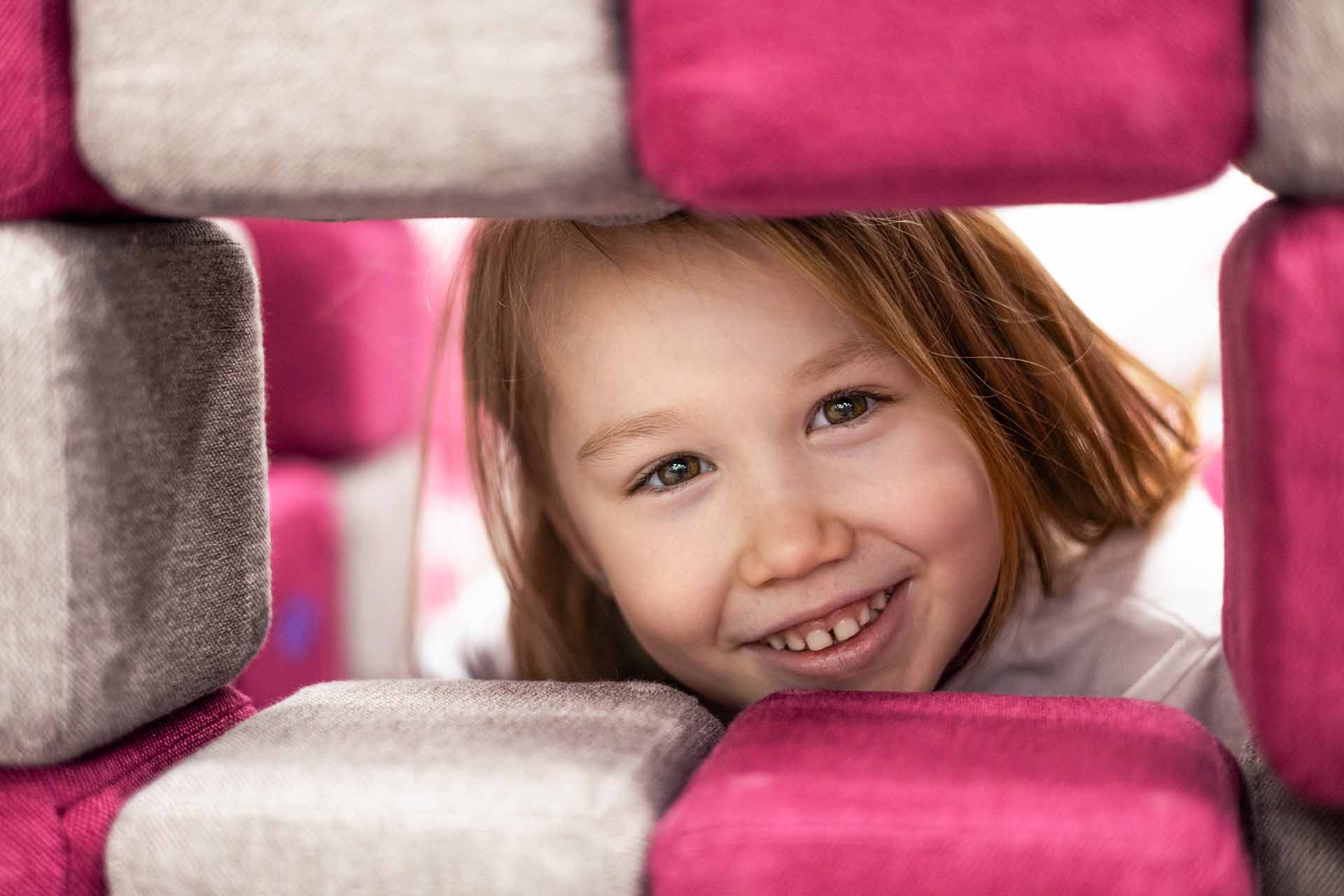
Gross motor skills
JollyHeap block therapy helps develop coordination and movement control through:
• Building obstacle courses – children can create complex paths that require balancing, jumping, or crawling. Adding narrative or context makes exercises more engaging and fun.
• Climbing and balance – constructions can serve as platforms for practicing balance and coordination. Their modifiability allows them to be tailored to the child’s physical and cognitive abilities.
• Strength play – lifting blocks, building tall structures, and knocking them down engages the entire body, supporting natural strengthening and stretching. Such activities involve various muscle groups – from arms and torso to legs. The variety of block sizes allows gradual progression in difficulty, aiding strength and coordination development. These activities also positively influence posture and body control.
Fine motor skills
Precise block manipulation supports the development of fine motor skills essential for handwriting and hand therapy:
• Grip exercises and hand-eye coordination – Playing with JollyHeap blocks improves precise grip and placement abilities. The blocks’ size, softness, and interlocking features encourage different grip types (pincer, monkey, or even foot grips).
The alternating block colors serve as an additional visual stimulus, enhancing hand-eye coordination. The child’s brain must constantly process visual information and adjust hand movements, strengthening fine motor control and spatial orientation.
• Pressure and force control – Regulating force is key for fine motor control, essential in daily tasks like writing or using objects. JollyHeap blocks allow natural experimentation with varying pressure levels.
During construction and disassembly, children must adjust their grip force. The magnetic resistance teaches force modulation and movement precision. Additionally, squeezing, moving, or building with the blocks develops tactile awareness and helps children judge how much pressure to apply for desired results.
Such exercises are particularly valuable in therapy for children with low or high muscle tone, as they gradually strengthen hand muscles and improve force control.
“I use them as a mat, a physical therapy table, obstacle courses, balance training paths, coordination ladders, slides, ramps, weights, step platforms of different heights – even as a roller. Just building these structures with JollyHeap blocks already promotes sensory integration, coordination, focus, and attention.”
– Rafał Królak, Physiotherapist
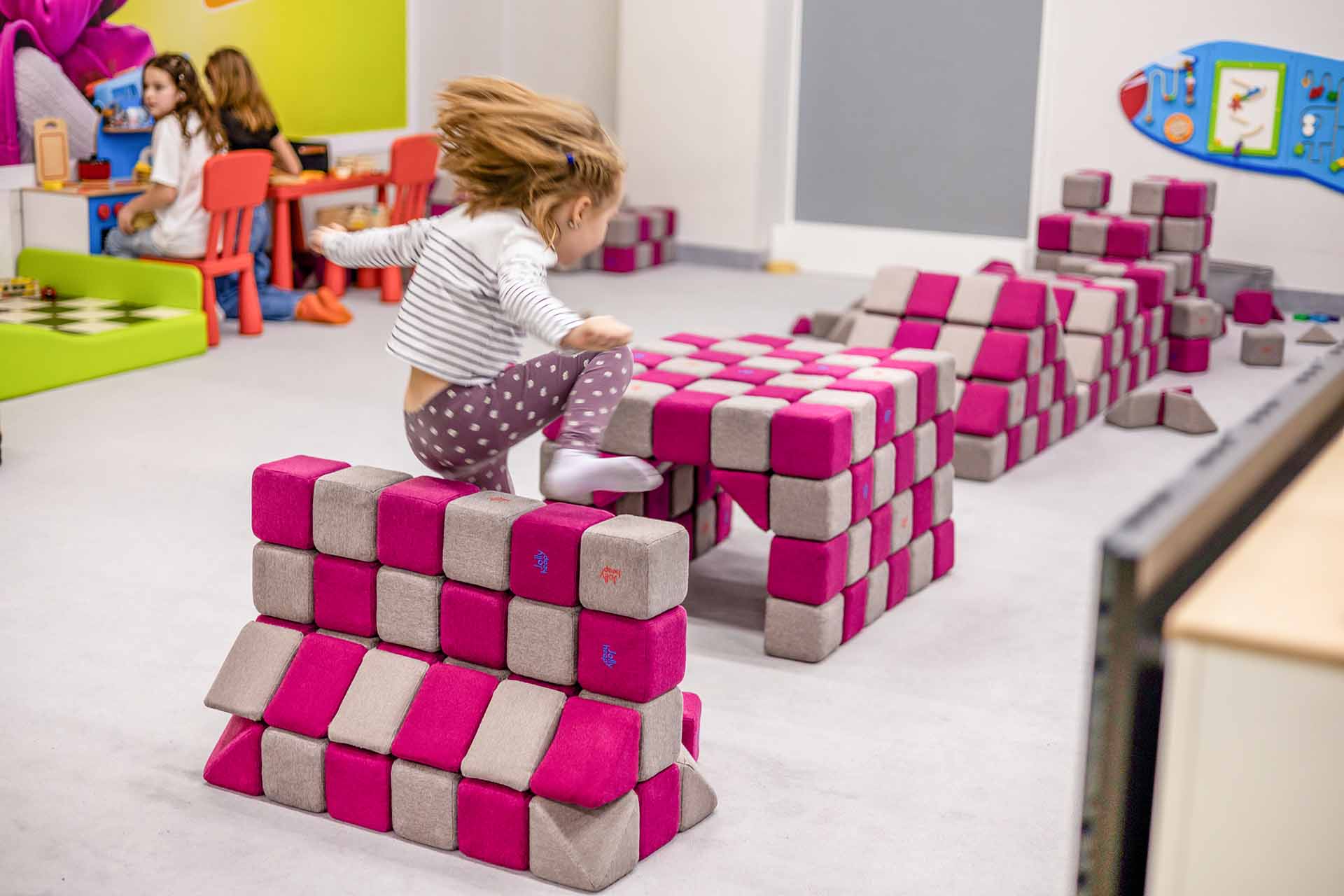
3. Play Therapy with JollyHeap Blocks as a Tool for Emotional Regulation and Calming
Children experiencing sensory overload or emotional regulation difficulties can use JollyHeap blocks to calm down.
How do JollyHeap blocks support self-regulation?
• Building hideouts and calming zones – children can create spaces that provide safety and privacy. These areas offer a natural way to withdraw from external stimuli, giving children a moment to rest and self-regulate. Such activities are a valuable part of play therapy, promoting emotional balance through safe, self-directed play.
• Acoustic insulation – the foam in the blocks has excellent sound-absorbing properties, reducing environmental noise and aiding concentration. Inside these hideouts, children can better focus on themselves and their emotions, which supports calming and enhances the therapeutic benefits of play therapy.
JollyHeap blocks are thus ideal for creating “quiet corners,” supporting self-regulation and stress reduction. Their soft, modular structure allows the creation of cozy, comfortable spaces where children can retreat from overstimulation. In such settings, it’s easier for them to calm down, process emotions, and regain balance. Manipulating the blocks – building, pressing, or squeezing them – further supports relaxation and inner peace.
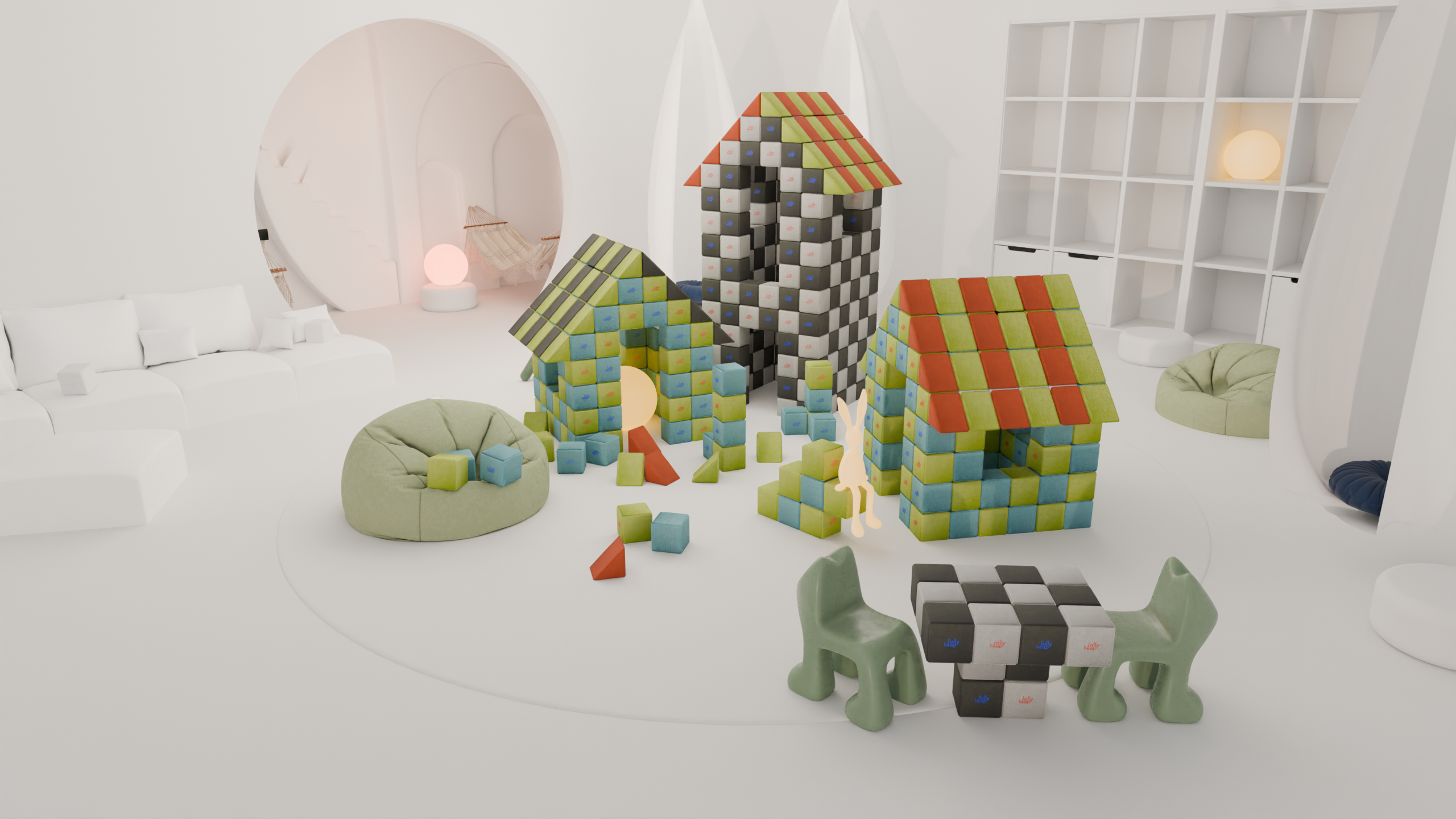
4. Developing Social and Communication Skills
Motor skill development is another critical area supported by development toys and play therapy. These skills are divided into two categories: gross motor skills, involving large muscle groups like those used in running and jumping, and fine motor skills, which rely on smaller muscles essential for tasks like writing and buttoning a shirt. Development toys can enhance both:
– Gross Motor Skills: Toys like ride-on cars, balls, and jump ropes get children moving, promoting body coordination, balance, and physical strength. Activities often double as fun ways to burn off energy.
– Fine Motor Skills: Activities like threading beads, stacking rings, or using play dough refine hand-eye coordination and dexterity. These toys require precision in movement, which helps children gain control over their fingers and hands.
By playing with toys that encourage movement and exploration, children develop control and coordination that are crucial for a wide range of everyday activities, setting them up for success in sports and various physical pursuits.
5. Therapy for Children with ASD and Intellectual Disabilities
Children on the autism spectrum and those with intellectual disabilities often struggle with accepting new stimuli, which can cause anxiety and stress. Thanks to their structure and properties, JollyHeap blocks are an excellent therapeutic tool in such cases.
How do JollyHeap blocks support therapy for ASD and intellectual disability?
• Safe structure – The soft foam used in JollyHeap blocks gives children a sense of security, encouraging active participation in play. Their gentle surface removes the fear of injury, allowing children to feel comfortable even during more dynamic activities.
• Controlled demolition – Children with autism often prefer predictability and repetition. Building and knocking down structures becomes a source of satisfaction. This activity, as part of therapy, allows them to control the situation, which has a calming effect and positively influences their well-being.
• Creating predictable spaces – Children can organize their surroundings in a way that gives them a sense of control and comfort. Constructing a space tailored to their needs fosters a feeling of safety, particularly in environments that might otherwise feel overwhelming.
• Quiet play – JollyHeap blocks are also very quiet during play. Their materials and the way they connect minimize noise, which is crucial for children sensitive to sound. Children on the autism spectrum who may have difficulty tolerating loud noises can find a calm, peaceful outlet for focus and relaxation with these blocks.
Conclusion
Therapy doesn’t have to be a monotonous process filled with repetitive exercises – with the right tools and play therapy techniques, it can become engaging and enjoyable, supporting a child’s development on multiple levels. Thanks to their unique design, JollyHeap blocks offer broad therapeutic possibilities that aid sensory, motor, and emotional development.
Because of their versatility, these blocks are effective in both individual and group play therapy sessions and in designing exercises tailored to the needs of each child. The ability to build hideouts, obstacle courses, or interactive structures makes JollyHeap blocks a valuable tool for therapists, educators, and teachers, helping children naturally develop key life skills.
Yet the greatest advantage of JollyHeap blocks is that they support a child’s motor and sensory development in a natural way – through everyday play, without requiring specialized sessions or a one-on-one approach. Free play with the blocks engages the child’s body, mind, and senses, supporting holistic development. Educators and therapists can flexibly alternate between more structured exercises and spontaneous play therapy, providing rest while maintaining therapeutic value.
